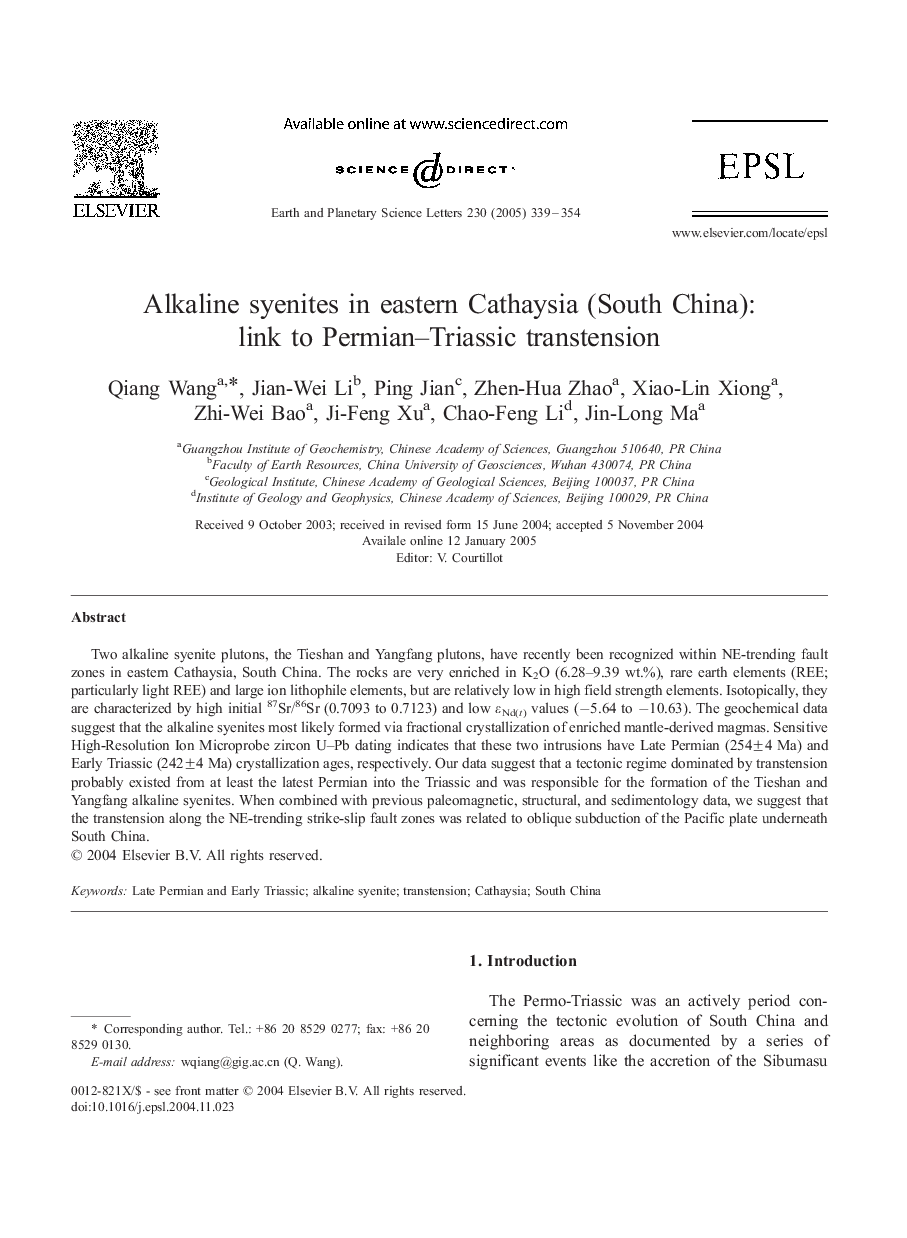| Article ID | Journal | Published Year | Pages | File Type |
|---|---|---|---|---|
| 9522349 | Earth and Planetary Science Letters | 2005 | 16 Pages |
Abstract
Two alkaline syenite plutons, the Tieshan and Yangfang plutons, have recently been recognized within NE-trending fault zones in eastern Cathaysia, South China. The rocks are very enriched in K2O (6.28-9.39 wt.%), rare earth elements (REE; particularly light REE) and large ion lithophile elements, but are relatively low in high field strength elements. Isotopically, they are characterized by high initial 87Sr/86Sr (0.7093 to 0.7123) and low ÉNd(t) values (â5.64 to â10.63). The geochemical data suggest that the alkaline syenites most likely formed via fractional crystallization of enriched mantle-derived magmas. Sensitive High-Resolution Ion Microprobe zircon U-Pb dating indicates that these two intrusions have Late Permian (254±4 Ma) and Early Triassic (242±4 Ma) crystallization ages, respectively. Our data suggest that a tectonic regime dominated by transtension probably existed from at least the latest Permian into the Triassic and was responsible for the formation of the Tieshan and Yangfang alkaline syenites. When combined with previous paleomagnetic, structural, and sedimentology data, we suggest that the transtension along the NE-trending strike-slip fault zones was related to oblique subduction of the Pacific plate underneath South China.
Keywords
Related Topics
Physical Sciences and Engineering
Earth and Planetary Sciences
Earth and Planetary Sciences (General)
Authors
Qiang Wang, Jian-Wei Li, Ping Jian, Zhen-Hua Zhao, Xiao-Lin Xiong, Zhi-Wei Bao, Ji-Feng Xu, Chao-Feng Li, Jin-Long Ma,
